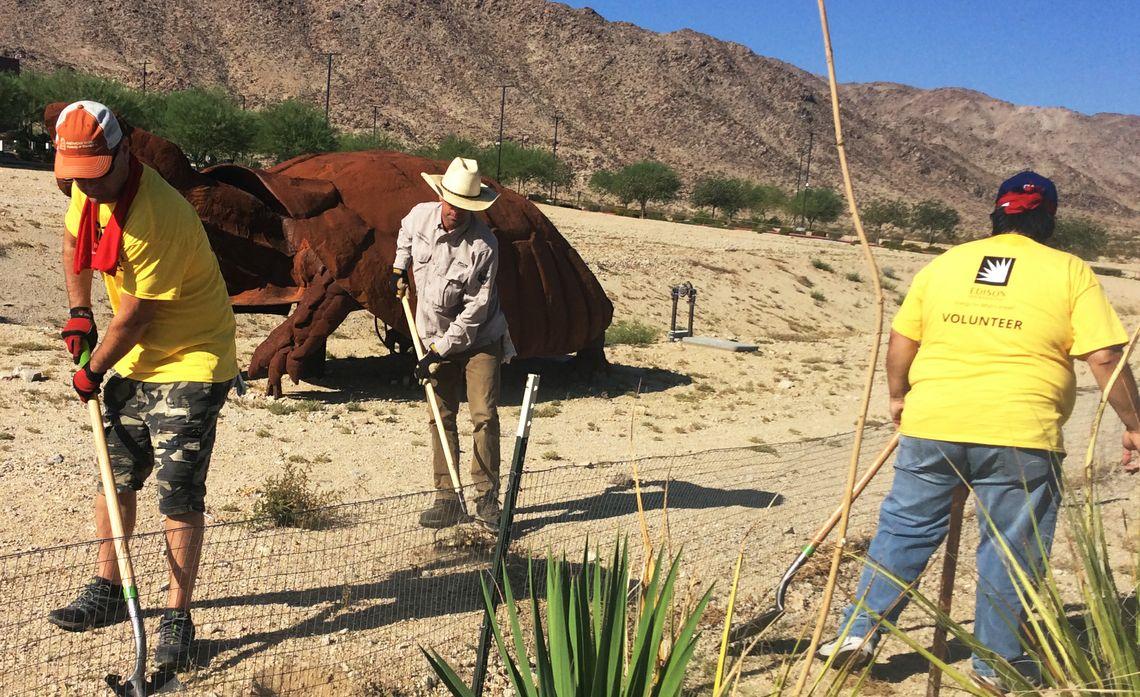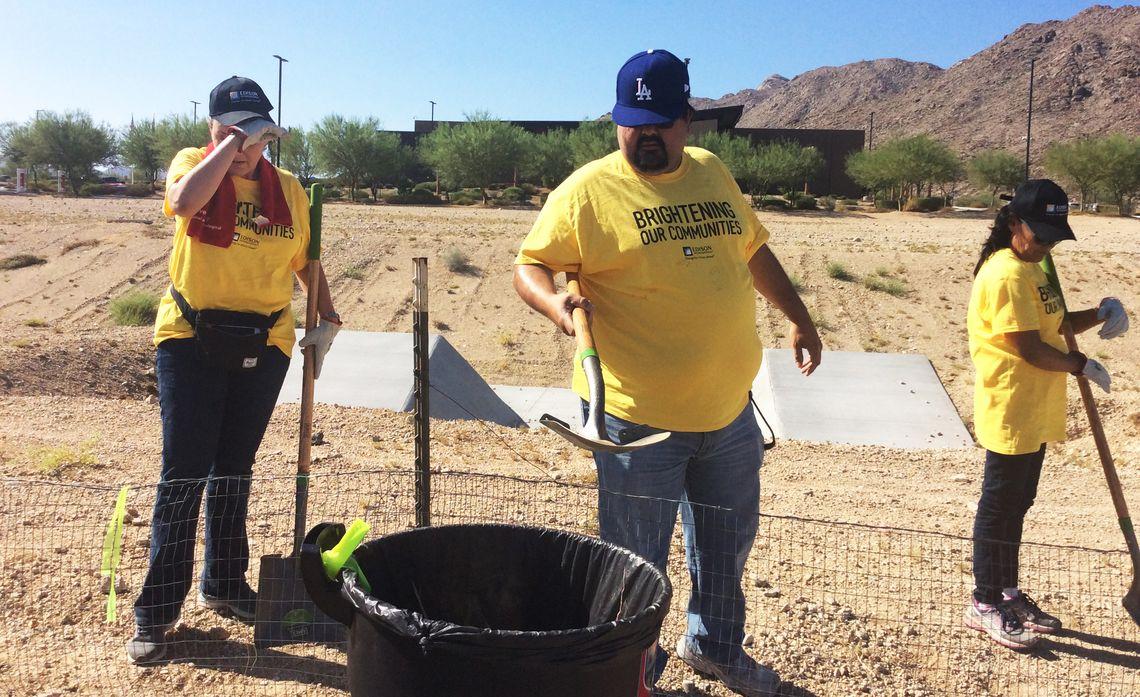Protecting Desert Tortoises in the Mojave Desert
SCE volunteers recently partnered with the Twenty-Nine Palms Indian Reservation to help clear an exclusion fence for the threatened species.
Originally posted on Inside Edison
Growing up on the Navajo Reservation in Arizona, Marlene Woo remembers the desert life — the look, the heat and the smell from the desert plants wafting through the vast openness of the range.
Those memories returned to the Southern California Edison senior claims representative recently when she volunteered with the company’s employee resource group Native American Alliance at the Twenty-Nine Palms Band of Mission Indians Reservation.
Woo joined a team of volunteers who spent a hot summer morning clearing brush and debris along the tribe’s desert tortoise exclusion fence. The wire fence serves as a barrier to protect desert tortoises, which are a federally threatened species, as listed by the U.S. Fish & Wildlife Service.
Vehicles on roads and highways pose a serious threat to an estimated 150,000-200,000 tortoises in the Mojave Desert, which includes the city of Twentynine Palms. The tortoise’s coloration blends in with the desert landscape, making the reptile difficult to spot.
Volunteers went to work after a desert tortoise awareness training conducted by Shawn Muir, the Twenty-Nine Palms tribal environmental coordinator.
Armed with shovels, rakes, hoes and hedge trimmers, they leveled soil, cleared the ground, picked up trash and removed overgrown vegetation along the fence surrounding an approximately 120-acre desert tortoise exclusion area within the 160-acre reservation. The remaining 40 acres of the reservation has been designated by the tribe as a conservation area for the desert tortoise.
Areas of the fence in need of fixing were tagged with flagging tape for tribal staff to repair at a future date.
“We’ve volunteered in urban communities in the past, but this year, NAA deliberately came out to the tribes to build a partnership, to be visible and have a presence,” said Woo, president of SCE’s Native American Alliance.
SCE’s partnership with the Twenty-Nine Palms Band of Mission Indians is mutually beneficial. The tribe’s endeavors align with SCE’s strategic initiatives that include diversity and inclusion, community outreach, education, corporate philanthropy and environmental stewardship.
Edison International, the parent company of SCE, presented a $5,000 grant to the Twenty-Nine Palms Band of Mission Indians to further partnership opportunities within the Native American and SCE communities. The money will be used to support the tribe’s historic preservation and environmental protection projects.
Edison International also helps fund scholarships for high school students in the area.
“The tribe was a recipient of multiple Edison grants which contributed toward the Theresa A. Mike Scholarship Foundation, a scholarship program for local community high school students pursuing higher education,” said Anthony Madrigal, Jr., director of the Tribal Historic Preservation Office & Grants for the Twenty-Nine Palms Band of Mission Indians.
“It’s had quite an impact resulting in 50 to 60 scholarships awarded annually.”
As mid-day approached, the rising desert sun signaled the end of the volunteers’ workday. A quick glance back at the area along the exclusion fence revealed a fence line that had been cleaned and inspected per the tribe’s Habitat Conservation Plan.
“It’s a large area and just shows you the desert tortoise habitat in the high desert,” said Madrigal. “This event helped us eliminate invasive vegetation so we can restore the fence to the U.S. Fish & Wildlife Service guidance, and clean up trash that accumulates over time on the Reservation.
“It definitely had a meaningful impact. It was a great event and the tribe is appreciative.”





